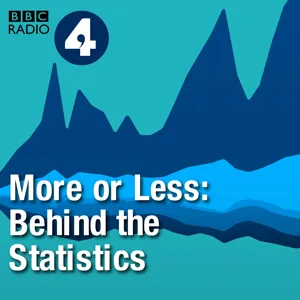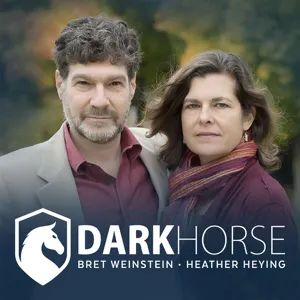Podcast Summary
Mint Mobile lowers prices amidst competitor hikes, 1800flowers offers Mother's Day discounts: Mint Mobile reduces prices to $15 a month for unlimited plan, offering affordability. 1800flowers gives discounts for Mother's Day purchases. UK experiences rise in COVID-19 cases due to delta variant, affecting younger demographic. UK daily cases around 6000, similar to September 2021, but age distribution and consequences differ.
Mint Mobile, a cell phone provider, is reducing its prices in contrast to other companies increasing theirs. This comes as a response to the announced price hike by competitors due to inflation. The new price for Mint Mobile's unlimited plan is now $15 a month, offering a more affordable option for consumers. Additionally, 1800flowers.com is offering discounts for Mother's Day purchases. Regarding the COVID-19 situation, the UK is experiencing a rise in cases due to the delta variant, which is doubling every 10 to 12 days. However, the age demographic of those affected is younger compared to the first and second waves. The current number of daily cases in the UK is around 6000, which is similar to where we were in September 2021. The difference lies in the age distribution and the consequences for those infected. The government's COVID dashboard reports higher vaccination rates for England as a whole compared to individual regions, which contributes to the confusion about the current state of the pandemic.
Younger Population Drives Current COVID-19 Surge: Though older populations have been vaccinated, the current COVID-19 surge is skewing younger. It's crucial to delay the spread through measures like vaccinations and mask-wearing. Younger people are more likely to die from car crashes than COVID-19, but masks and seat belts serve different purposes.
The current surge in COVID-19 cases is skewing younger due to the fact that older, more vulnerable populations have been vaccinated. Cases are indeed rising quickly, doubling approximately every 12 days, making it crucial to delay the spread as much as possible through measures like vaccinations and mask-wearing. The risk of death from COVID-19 versus a car crash depends on age. For those under 30, more people died from road accidents than from COVID-19 during the first year of the pandemic. However, it's important to note that not wearing a mask and not wearing a seat belt are not directly comparable risks, as masks primarily help prevent the spread of the virus to others, while seat belts save lives by protecting the wearer in the event of a crash.
Comparing the risks of COVID-19 and vaccine-related blood clots for older individuals: Older individuals face a significantly higher risk of dying from COVID-19 compared to the extremely low risk of dying from a vaccine-related blood clot.
While the risk of accidents and injuries is higher for younger age groups, the risk of COVID-19 is significantly greater for older individuals. Regarding the concerns about the AstraZeneca vaccine and blood clots, the statistics show that the chances of dying from a vaccine-related blood clot are extremely low compared to the risk of dying from COVID-19 for people in their seventies. For instance, the likelihood of a 70-year-old dying from a blood clot after getting the AstraZeneca vaccine is less than 1 in a million, whereas 1 in 200 men in the same age group have died from COVID-19 over the last year. Therefore, the historical risk of death from COVID-19 for this age group is several thousand times higher than the risk of a vaccine-related blood clot. Furthermore, looking forward, the risk of dying from COVID-19 is likely to still be much higher, even if not thousands of times higher, but certainly dozens or even hundreds of times higher. Regarding the claim made by Grant Shapps about fewer deaths on smart motorways per 100,000,000 miles driven compared to conventional motorways, the comparison is not straightforward. While the research from Highways England supports Shapps' claim, the differences between various stretches of roads make a direct comparison meaningless, even when adjusted for miles driven. What we need to know is the safety comparison between specific sections of smart and conventional motorways under comparable conditions.
Smart motorways found to be safer than traditional motorways: Study shows reduction in overall casualties and fatalities for all types of smart motorways, with biggest reductions seen in all lane running schemes, due to smoother traffic flow, increased enforcement, and drivers taking more care.
Smart motorways, despite some drivers' concerns, have been found to be safer than traditional motorways based on accident statistics. Claire Murray, a postgraduate student at the University of Leeds, conducted a study comparing casualty rates before and after the implementation of smart motorways. Her findings showed a reduction in overall casualties and fatalities for all types of smart motorways, with the biggest reductions seen in all lane running schemes. The reasons for this increase in safety may include drivers taking more care due to feelings of unease, smoother traffic flow, and increased enforcement through speed cameras. However, the removal of the hard shoulder does create a risk of collision with stationary vehicles, but this may be outweighed by the overall safety benefits. Smart motorways are designed to reduce the risk of sudden traffic stops and starts, and the added lane and speed control measures help traffic flow more smoothly. While some drivers may not feel safer on smart motorways, the data suggests that they are, in fact, contributing to a reduction in accidents.
Different population estimates used for calculating vaccination rates: England's higher vaccination rate compared to regions may be misleading due to different population estimates used for calculation
The difference in COVID-19 vaccine uptake rates between England and its regions is due to the use of different population estimates when calculating the vaccination rates. The national rate is based on an estimate from the Office for National Statistics (ONS) from 2019, which is likely an underestimate of the current population. On the other hand, the regional rates are calculated using data from the National Immunization Management Service (NIMS), which includes a slightly larger population due to people being registered in more than one region or still being registered with a GP in England even if they no longer reside there. As a result, the vaccination rate for England appears higher than the regional rates, even though the actual vaccination coverage might be similar. This discrepancy can lead to confusion and misinterpretation of the data.
Discrepancies in UK vaccination rates due to differences in data collection methods and population estimation: Differences in data collection methods and population estimation can lead to discrepancies in vaccination rates between regions and nations in the UK
The discrepancy between regional and national vaccination rates in the UK can be attributed to differences in data collection methods and population estimation. For instance, Public Health England explained that not all devolved nations have a register like the National Immunization Management Service (NIMS), making it necessary to use the Office for National Statistics (ONS) figures for a uniform comparison. However, NIMS figures provide a more accurate picture at a local level. A surprising example of this discrepancy is the vaccination rate in Cambridge, which appears significantly lower than the national average at 46.1%. This discrepancy is due to a difference in population estimation: the ONS estimates the population of Cambridge to be around 125,000, while NIMS estimates it to be 182,000. The NIMS figure is based on the number of people registered with the NHS with a Cambridge address, which includes students who may have moved away but not updated their records. This results in an inflated figure and, consequently, an artificially low vaccination rate for the actual population. In other news, a listener named Megan asked about the common claim that 80% of women wear the wrong bra size. While this statistic seems plausible based on personal experience, it has not been definitively verified. Further investigation is needed to determine the accuracy of this claim.
The uncertainty of the 80% statistic on women wearing the wrong bra size: Despite the debated origin and accuracy of the 80% statistic, wearing an ill-fitting bra can lead to discomfort, pain, and health issues. Finding a well-fitting bra is crucial for comfort and support.
The statistic claiming that 80% of women wear the wrong bra size has been circulating for decades, but its origin and accuracy are uncertain. The number seems to have evolved from 70% in the 1990s and even earlier. While some experts believe it due to the inadequate bra size system, others view it as a marketing ploy. The UK bra size system, in particular, is criticized for being based more on art than science. The size is determined by the underband measurement, which is the rib cage measurement plus 4 or 5 inches, and a cup size represented by a letter. This complex and inconsistent system makes it challenging for women to find the right fit. Despite the doubts surrounding the statistic, many experts agree that wearing an ill-fitting bra can lead to discomfort, pain, and health issues. Therefore, it's essential to prioritize finding a well-fitting bra to ensure comfort and support.
The current bra size system is outdated and inconsistent: The current bra size system, based on difference between bust and under-bust measurements, is unreliable and inconsistent, leading to confusion and ill-fitting bras.
The current bra size system, which originated in America around 90 years ago and is used worldwide, is outdated and inconsistent. The measurement system is based on the difference between the fullest breast measurement and the under-bust measurement, but different manufacturers use different systems, leading to confusion. The letter denoting the cup size does not represent a set volume, but rather the extent of the difference between the two measurements. This cross-grading system means that a 34A cup has the same volume as a 32B or 30C cup. The traditional bra fitting method, which involves measuring with a tape measure, is unreliable and often results in women wearing ill-fitting bras. The system was only ever meant to go up to a D cup, and as breast sizes have increased, the method has become even less effective. It's important for women to understand that the current bra size system is inconsistent and unreliable, and they may need to be fitted in person to find the right size.
Focus on how well each bra fits, not just the size label: Proper bra fit is crucial, as size can vary greatly among brands, shops, and styles. Emphasize comfort and support over size.
When it comes to finding the right bra size, it's important to focus on how well each bra fits your body, rather than getting too fixated on the size indicated on the tag. Professor Joanna Wakefield Scully emphasized this during a discussion on BBC Radio 4's "More or Less," noting that what fits well can vary greatly from shop to shop, brand to brand, and style to style. Additionally, the BBC Radio 4 series "Descendants" explores the connection between Britain's role in slavery and the lives of people in Britain today. Meanwhile, 1800flowers.com offers a range of gift options for various occasions, and UnitedHealthcare Insurance Plans provide flexible, budget-friendly coverage for medical, vision, dental, and more.



